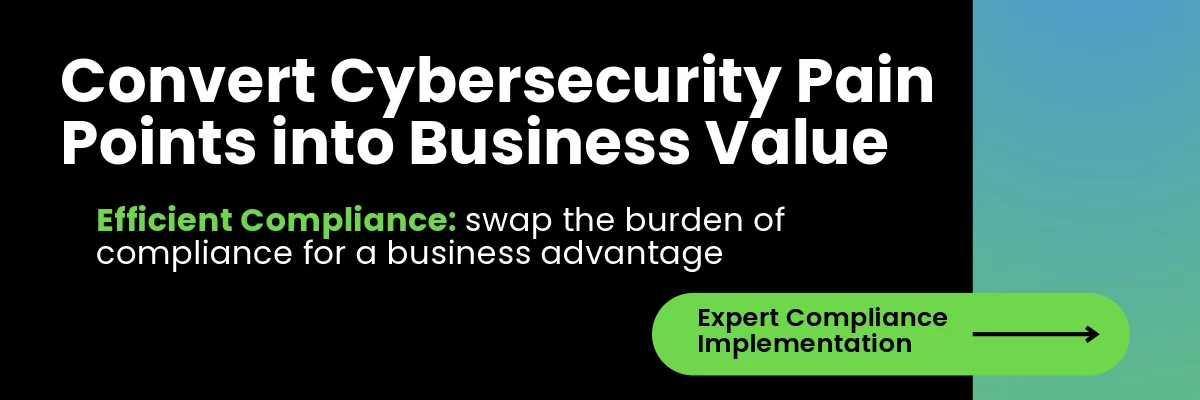How acceleration tools promise faster FedRAMP success — and where they can quietly compromise control.
In today’s federal cloud market, speed is currency. As agencies advance zero-trust strategies and cloud-first mandates, demand for FedRAMP authorization continues to climb, and so does the pressure to deliver faster. In response, a growing ecosystem of FedRAMP “accelerators” has emerged, promising preconfigured, compliant environments designed to cut months off the path to authorization.
At first glance, the appeal is undeniable: accelerators offer reusable security frameworks, automated evidence collection, and ready-made NIST control mappings. They position themselves as the shortcut to compliance, and in many cases, they deliver measurable gains.
But after advising numerous cloud service providers and defense technology firms, one truth has become clear: the real question isn’t whether an accelerator can save time. It’s what you trade for that time. High recurring costs, vendor lock-in, reduced visibility, and dependency risks can quietly offset the efficiencies accelerators promise. Accelerators provide significant value for many organizations in the market place, but many companies leveraging their services don't fully appreciate what responsibilities remain on them as the assessed entity relative to compliance responsibilities. Accelerators will provide as much support and value as they can, but even they will tell you they can not do everything. Many organizations have unrealistic expectations of their accelerators and it is important to understand what they are not on the hook for.
The opportunity is real — but so is the risk. This blog explores how accelerators fit into the evolving compliance landscape, the limitations that can impact long-term scalability, and what every organization should evaluate before committing to an accelerated path toward FedRAMP authorization.
Key Takeaways
-
Leveraging a “FedRAMP Accelerator” can significantly reduce time-to-authorization, but it does not eliminate compliance risk.
-
Authorization momentum is real: from July 2019 to April 2023, federal agencies increased FedRAMP authorizations by ~60 % (GAO 2024).
-
The newly launched FedRAMP 20x initiative is explicitly aimed at accelerating the process through automation and continuous evidence (FedRAMP.gov 2025).
-
Accelerators reduce manual work but can introduce blind spots if foundational controls and governance are immature.
-
For vendors serving the federal and defense ecosystems, an accelerator is a tool — not a strategy. It must be paired with robust governance, evidence, and disciplined monitoring.
Why Federally Accelerated Paths Are Gaining Traction
The federal marketplace is evolving rapidly. With modernization mandates, agency-wide zero-trust rollouts, and pressure to shorten procurement cycles, organizations are searching for faster, more repeatable ways to achieve authorization.
A recent study found that 62 % of organizations pursue FedRAMP primarily to improve their security posture, while 57 % do so to expand into government markets (PR Newswire, 2024).
Cloud providers like AWS have responded by launching Landing Zone Accelerators (LZAs) to streamline compliance with FedRAMP and CMMC frameworks (AWS Public Sector Blog).
In short, the acceleration trend reflects a broader government reality: compliance must move at the speed of innovation.
The Promise of Accelerators: Time, Cost & Market Access
Industry data highlights the benefits:
-
Over 400 cloud offerings now hold FedRAMP authorization, and agencies have reused those security packages more than 1,500 times to speed procurement and reduce redundant audits (Sprinto).
-
One platform claims access to the federal market in half the time and half the cost through an “Accreditation Accelerator” model (SMX Tech).
-
GAO reports authorizations increased nearly 60 % between 2019–2023, confirming measurable acceleration in the market (GAO 2024).
For organizations that already have security and documentation maturity, an accelerator can amplify results:
“If you can demonstrate that your underlying security controls are in place, an accelerator is the lever you pull to turn authorization into momentum at a cost.”
— Jason Ford
But Let’s Be Honest: The Risks & Realities
- Accelerators don’t replace governance.
FedRAMP still demands full documentation, assessment, authorization, and monitoring. The automation helps — but it doesn’t absolve responsibility (TrustCloud). - Evidence automation maturity matters.
The FedRAMP 20x program rewards organizations that can produce machine-readable, automated evidence for continuous monitoring. Without that foundation, accelerators lose efficiency (FedRAMP.gov 2025). - Prebuilt ≠ Simplified.
Even with a pre-configured environment, you must still align your CSO with the correct system boundary, impact level, and sponsoring agency (Insight Assurance). - The cost curve remains unpredictable.
The GAO estimates FedRAMP costs can range from tens of thousands to millions depending on complexity — accelerators may lower costs but rarely make them predictable (GAO 2024).
Best Practice Roadmap: Using Accelerators Responsibly
-
Conduct a readiness assessment first.
Map your controls and gaps before implementing. -
Select the right accelerator for your mission.
Match it to your system’s impact level and agency requirements. -
Engage your 3PAO early.
Integrate their feedback into accelerator customization. -
Automate evidence collection.
Streamline control mapping and monitoring (arXiv 2025). -
Prioritize continuous monitoring from day one.
Treat authorization as a starting line, not a finish line. -
Align with your agency’s mission.
Authorization alone doesn’t win contracts; mission-fit does.
How Accelerators Impact the Compliance-Growth Equation
For vendors competing in the federal and defense market, accelerators can reshape key performance indicators:
| Factor | Without Accelerator | With Accelerator |
|---|---|---|
| Time-to-Authorization | 12–18 months | 6–9 months |
| Total Cost of Compliance | High | Moderate (variable) |
| Control Visibility | Full ownership | Partial / inherited |
| Market Entry Readiness | Slower | Faster but conditional |
“The accelerator should be treated as a growth enabler — not a compliance shortcut. FedRAMP authorization isn’t a one-off achievement; it’s a repeatable capability.”
— Jason Ford
Final Thoughts
FedRAMP accelerators represent an important evolution toward scalable compliance — blending automation, standardization, and reuse. But no automation can replace disciplined governance or operational maturity.
At Steel Patriot Partners, our guidance remains consistent:
“Build your security and governance foundation first. Then, use the accelerator if it makes sense for your business case and risk tolerance. Don’t start with the shortcut and hope to patch the foundation later.”
— Jason Ford
Accelerators amplify efficiency. Governance sustains success. The organizations that master both will lead the next wave of secure, compliant federal innovation.
FAQ
What is a FedRAMP Accelerator?
A pre-built framework or environment designed to reduce the time and effort required to achieve a FedRAMP Authorization, including automated controls, reusable documentation, and pre-approved architectures (SMX Tech).
Can accelerators guarantee a faster ATO?
Not guaranteed, but they can significantly reduce redundancy. Reuse of security packages has shortened authorization times for many CSPs (Sprinto).
Do accelerators reduce costs?
They can lower operational and documentation costs but still require investment in governance, monitoring, and control maintenance.
What are the biggest risks?
Loss of visibility, dependency on a vendor’s authorization status, intellectual property exposure, and unpredictable exit costs.
How do I know if I’m ready for an accelerator?
If your NIST control framework, boundary definition, and continuous monitoring processes are already established, you’re ready. If not, complete a readiness phase first.
How does FedRAMP 20x change the equation?
It enables faster provisional authorizations through automation and continuous evidence. Organizations already leveraging accelerators will likely see the greatest benefit (FedRAMP.gov 2025).




